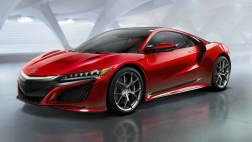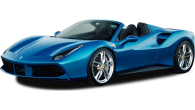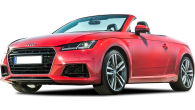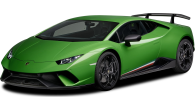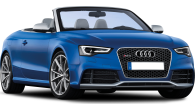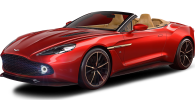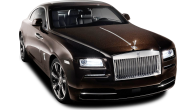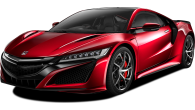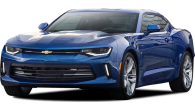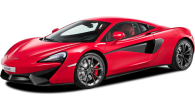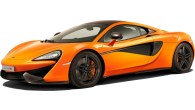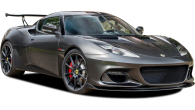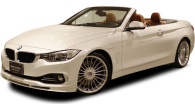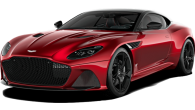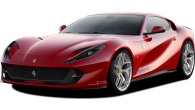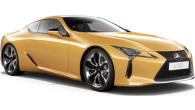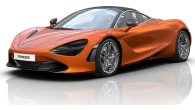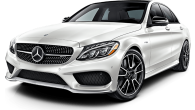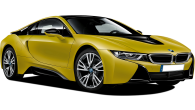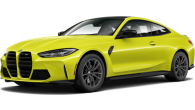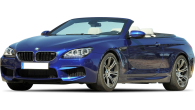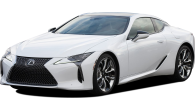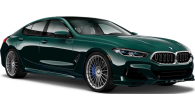Nothing on four wheels can beat a Porsche 911 Turbo off the lights. My right foot presses down hard on the throttle and the tachometer leaps to 5000rpm. The power of this Porsche 911 Turbo can be heard in the mechanical snarl from behind the cabin and the way it strains to be let loose.
It's in gear, sport-plus setting engaged, but we're not going anywhere. Yet. Ahead is nearly 2km of tarmac stretching into the haze of a 35C South Australian summer day. This facility at Tailem Bend, used by Mitsubishi when it was still making cars in the state, appears to be a half-built proving ground. There's this straight, a tiny tarmac loop and acres of not much else. Never finished, it's now neglected.
Except today. Porsche has borrowed it to demonstrate the capabilities of its 911 Turbo. This variant has been part of the line-up for 35 years, almost as long as the evergreen 911 itself, and sits at the pinnacle of the range. There are more extreme, track-focused 911s but this one, as either coupe or convertible, is meant for everyday use. No roll bars or fire extinguishers in here. Just lots of leather.
The Turbo is in the middle of its model cycle but has just been extensively overhauled and, for the first time since 1974, gets a completely new engine. A larger, 3.8-litre unit replaces the previous 3.6 to deliver 15kW more power and 30Nm more torque. With 368kW, it now has nearly twice the output of the original.
The new engine is also lighter, introduces direct fuel injection to the Turbo, and rethinks everything from the oil pump to the exhaust system. It revs higher, but average fuel consumption of 11.4 litres per 100km is a substantial improvement on the previous best of 12.8.
Of course the Turbo is all about performance and this is where the gains are most apparent. The company quotes a 3.4 second time from standstill to 100km/h, 0.3 quicker than before. The 0-200km/h time falls by nearly a second, to 11.3. I'm about to test those numbers out.
I hold the car against the brake for a second or so and gauge the potency of what I'm about to unleash. The word "Launch'' appears in a small display in one of the steering wheel spokes and the Porsche product expert in the passenger seat warns that a launch control start can be "quite severe''. Even knowing this, nothing can prevent me being thrown back in the seat when I lift my left foot off the brake.
The surface isn't as grippy as Porsche would like, but G-force jolt aside the way this car takes off is amazingly drama free. The all-wheel drive system can divide torque between the front and rear axles as required, and gets power down efficiently. The tyres are warm from previous runs and there's no wheel spin. All I have to do is keep my right foot pinned to the firewall.
The tachometer climbs quickly from 5000rpm to 7000rpm then flicks back as the gearbox automatically shifts up, before repeating the sequence. The Turbo uses the seven-speed double-clutch transmission, called PDK, now available across the Porsche range, and changes gear with remarkable smoothness even under full throttle.
Like the five-speed torque converter automatic it replaces, it delivers better acceleration times than the six-speed manual. The PDK now has the best fuel economy figures as well. Here, I'm only interested in speed and the tiny speedometer goes in only one direction as the Turbo fast-forwards the horizon.
There's no let-up. The 400m markers pass in a flash, then the ones at 750m and at 1km the car is still accelerating. That's my signal to brake, and I do. Hard.
The run takes place so quickly it's difficult to take it all in. Radar measures my speed as 254km/h crossing the 1km mark, which is a rough guide. It's fast. Back in one of the small service buildings there's a chance to study the telemetry from a special recorder inside the car that uses the global positioning system. It offers a wealth of accurate detail.
The times are astonishing. Getting to 100km/h takes just 3.3 seconds and little more than 50m of road. By 400m, the Turbo is exceeding 200km/h and it's taken just 11.2 seconds to get there. From standstill, the car dispatches a kilometre of tarmac in 20.6 seconds. By any measure, these are supercar vital statistics. There is nothing on sale in Australia that a Turbo driver needs to worry about at the lights. Nothing on four wheels, at any rate.
Even more remarkable, the times are repeatable, with two aboard, in the shade-less heat. Maximum speeds are almost identical on every run, with small variations in 0-100km/h times coming down to tiny differences in conditions, such as the weights of the various drivers. Unlike the launch control button on some sportscars, the Porsche system can be used all day. The engine remains smooth and completely unruffled.
For knowledgeable onlookers, there are visual clues that this is a special 911, including huge tailpipes, a split wing and the word "Turbo'' spelled out across the rear. But none of the drama of a Ferrari or Lamborghini. For an owner, it offers relative anonymity compared with something red and Italian.
Its performance doesn't compromise its useability, either. The 911 Turbo has talent at both ends of the performance spectrum. Around town, the tiger is a pussycat and the ride comfort, even on 19-inch wheels, is pliant enough for commuting.
The interior is quiet for a sportscar, even refined at low-speeds and on smooth surfaces. The options list is long, but the cabin is anything but sparse. Leaving Adelaide on the way to Tailem Bend, the city soon gives way to the twisty hills that play host to the annual classic rally - a favourite for Porscheowners. From behind the wheel of the Turbo, these can be dispatched at remarkable pace and with incredible ease.
The variable turbine geometry that debuted in the previous model is retained here, and with the PDK gearbox, engine response is first-rate. The brakes are strong and the chassis engaging.
What the Turbo conveys, almost immediately, is an immense reserve of dynamic ability combined with the intimacy of a driver's car. Few vehicles have as many trump cards in this suit.
The test cars on last week's drive were fitted with all the latest tricks and as with many cars at this level, many of these have to be optioned in. Chief among them is the Sport Chrono pack, which for another $8590 brings the launch control function mentioned above, sport and sport-plus settings and an overboost to the turbochargers, which briefly raises maximum torque to 700Nm.
This option also includes the active engine mounts that debuted recently in the 911 GT3. When pressing on, these stiffen to make the engine a rigid part of the car so that there is no unwelcome weight transfer in corners. Around town, the engine mounts allow a bit more "give'' for better ride comfort.
The PDK gearbox is also an option but unlike the previous automatic, it now comes with a limited-slip rear differential. A new dynamic feature is Porsche Torque Vectoring, which actively enhances cornering ability by selectively, and momentarily, braking an inside wheel. It only comes into play at maximum attack.
By the time you've added steering wheel gearshift paddles (new to Porsche), dynamic headlights and ceramic brakes (one of the more expensive boxes to tick at $20,590), the $360,100 starting price will be nudging $400,000. However, a full-fruit Turbo still looks like a bargain next to its Italian rivals, which start much higher up the price scale and have an equally extensive options strategy.
The twin aces of liveability and driveability makes the Turbo a favourite among 911 buyers, with 230 opting for the previous model over three years on sale here. Porsche expects no shortage of buyers this time despite a market still hung over from the GFC.
PORSCHE 911 TURBO
Vehicle: Sports coupe and convertible
Engine: 3.8-litre twin-turbocharged horizontal six-cylinder
Outputs: 368kW at 6000rpm and 650Nm at 2100rpm
Transmission: Six-speed manual or seven-speed double clutch transmission, all-wheel drive
Price: From $360,100 plus on-road costs
Porsche 911 2010: Turbo S
| Engine Type | Turbo 6, 3.8L |
|---|---|
| Fuel Type | Premium Unleaded Petrol |
| Fuel Efficiency | 11.4L/100km (combined) |
| Seating | 4 |
| Price From | $126,170 - $144,980 |








